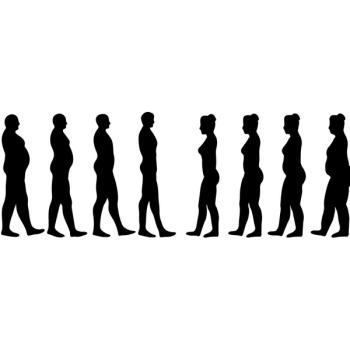
Overweight, Obesity in Midlife Tied to Higher Morbidity and Health Care Costs Later in Life
Having overweight or obesity in midlife was associated with significantly higher cumulative morbidity and health care costs during older adulthood in prospective cohort study.
Having
“The greater proportion of life lived with morbidity translated to higher adjusted cumulative and mean annual health care expenditures during older adulthood, which will have substantial consequences for health care costs as the aging population intersects with the
To examine the association of body mass index (BMI) in midlife with morbidity burden, longevity, and health care expenditures in older adulthood, Khan and colleagues conducted a prospective cohort study of participants from the Chicago Heart Association Detection Project in Industry.
Participants underwent baseline in-person examinations between November 1967 and January 1973, which was linked to Medicare data collected between January 1985 and December 2015. The final analysis included 29 621 adults enrolled in Medicare who were followed for over 40 years after baseline examination.
Among the total cohort, 57.1% were men, 9.1% were Black, and the mean age was 40 years. Using the same BMI categories as defined by the
- Underweight (BMI, <18.5 kg/m2)
- Normal (BMI, 18.5 to <25 kg/m2)
- Overweight (BMI, 25 to <30 kg/m2)
- Class I and II obesity (BMI, 30 to <40 kg/m2)
- Class III obesity (BMI, ≥40 kg/m2)
At baseline, 46% of participants had normal BMI, 39.6% were overweight, and 11.9% had classes I and II obesity. Investigators observed a higher cumulative morbidity burden in older adulthood among participants with overweight (7.22 morbidity-years) and those with classes I and II obesity (9.8 morbidity-years) compared with those with a normal BMI (6.1 morbidity-years) in midlife (P<.001).
The mean age at death was similar between participants who were overweight (82.1 years; 95% confidence interval [CI], 81.9-82.2 years) and those who had normal BMI (82.3 years; 95% CI, 82.1-82.5), but younger for those with classes I and II obesity (80.8 years; 95% CI, 80.5-81.1), reported Khan and colleagues.
Compared to participants with a normal midlife BMI, cumulative excess Medicare costs after age 65 years were higher for those who were overweight in midlife by a median of $12 390 (95% CI, $10 427-$14 354) and for those with classes I and II obesity in midlife by a median of $23 396 (95% CI, $18 474-$28 319), wrote study authors.
“Resources and strategies are urgently needed at the individual and population level to address the growing public health challenge of excess weight in the context of an aging population,” concluded investigators.
Reference: Khan SS, Krefman AE, Zhao L, et al.
Newsletter
Enhance your clinical practice with the Patient Care newsletter, offering the latest evidence-based guidelines, diagnostic insights, and treatment strategies for primary care physicians.
















































































































































































































































































